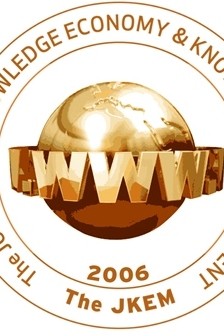HOW WILL ROBOTIZATION AFFECT RELATIVE MACROECONOMIC POSITIONS OF THE IDB MEMBER COUNTRIES?
Robotizasyon yolunda hızla ilerleyen ülkeler, etkinlik ve verimliliklerini artırarak diğer ülkelere göreceli üstünlük sağlayabilirler. Bu çalışma robotizasyonun İslam Kalkınma Bankası (İKB) üyesi ülkelerin göreceli konumunu nasıl etkileyeceği üzerine odaklanmaktadır. Diğer bir deyişle İKB üye ülke ekonomilerinin robotizasyonun yarattığı tsunamiye göreceli dayanıklılıkları nasıldır. Bu çalışma bunu yapmak için, iki farklı veri kümesi kullanarak hesaplayacağım, esnekliği robotizasyona göre sıralamamızı sağlayacak bir endeks önermektedir. İlk veri seti İKB üye ülkerinin 1995-2016 arası ihracatlarını kapsayan COMTRADE veri setidir. İkinci veri kümesi, ayrıntılı sektörel seviyelerdeki beşeri sermaye yoğunluğunu içermektedir.Bu veri Birleşmiş Milletler Ticaret Geliştirme Konferansı (UNCTAD) tarafından hazırlanan Açıklanmış Faktör Yoğunluk Endeksleri veritabanından alınmıştır. Bu iki veri setini kullanarak her bir İKB üye ülkenin ihracat sektörlerinin beşeri sermaye yoğunluğunu gösteren bir endeks hesaplanmıştır. Bu endeks değerlerinin büyüklükleri İKB üye ülkelerin göreceli esneklikleri ortaya koymaktadır. Endeks değerinin büyük olması robotizasyona göreceli dayanıklılığı göstermektedir. Bu çalışmanın sonuçları, İKB üye ülke ekonomilerinin robotlaşmaya ne kadar dirençli olduğunu anlamaya yardımcı olmaktadır. Buna ek olarak, politika yapıcılara, ülkelerinin direncini arttırmak için yeni politikalar geliştirmelerine de zemin sağlamaktadır.
How will Robotization Affect Relative Positions of the IDB Member Countries?
Countries that will be able to adopt robotization quickly will be able to increase efficiency and productivity giving them comparative edge over other countries. In this study, I focus on how robotization will affect the relative position of Islamic Development Bank (IDB) Member Countries (MCs). i.e. relative resiliency of the IDB MCs to the robotization tsunami. To do this, I propose an index calculated by employing two different data sets in order to rank resiliency to robotization. The first data set is COMTRADE; MCs’ exports data from 1995 to 2016. The second data set consists of the human capital intensity at detailed sectoral levels, and is called the Revealed Factor Intensity Indices database which are prepared by United Nations Conference on Trade Development (UNCTAD), and provide a unique number that indicates the factor intensity of a traded goods group according to SITC classification. I calculate an index based on these two data sets for each MC showing human capital intensity of the MC’s exports sectors for a year. Then, ranking the index value for each MC reveals the relative resilience of MCs: the higher the figure, the more resilient the MC to robotization. The results of this study help to understand how susceptible MCs’ economies to robotization. In addition, they will provide a ground to policy makers to develop relevant policies in order to decrease the vulnerability of their countries.
___
- Arntz, M, T. Gregory and U. Zierahn (2016): ELS Issues in robotics and steps to consider them, Centre for European Economic Research Mannheim, Germany.
- Boston Consulting Group (2011): Made in America Again, Why Manufacturing will Return to the US.
- Frey, C. and M. Osborne (2013): The Future of Employment: How Susceptible are Jobs to Computerization?, September 2013.
- Gorle, P. and A. Clive (2013): Positive Impact of Industrial Robots on Employment, International Federation of Robotics.
- Ozcan, R. (2017): Robots Replacing Humans, Creative Destruction or Total Annihilation?, IDB Policy Brief.
- Reshoring Initiative (2017): Reshoring Initiative 2016 Data Report: The Tide has Turned.
- Shirotori, M., B. Tumurchudur and O. Cador (2010): Revealed Factor Intensity Indices at the Product Level, Policy Issues in International Trade and Commodities Study Series No. 44. UNCTAD.
